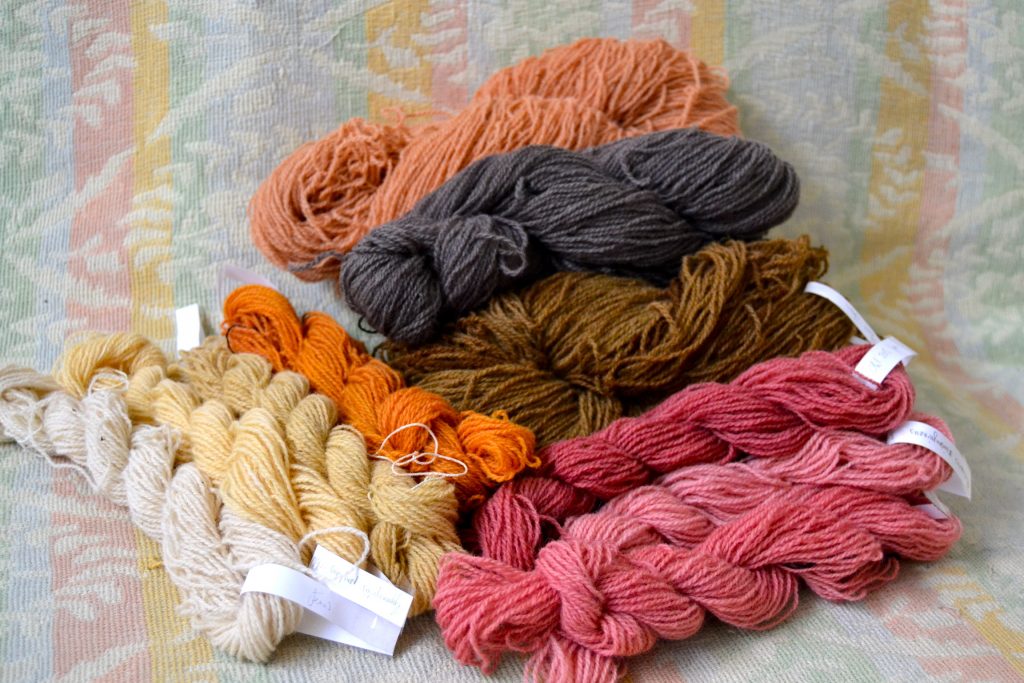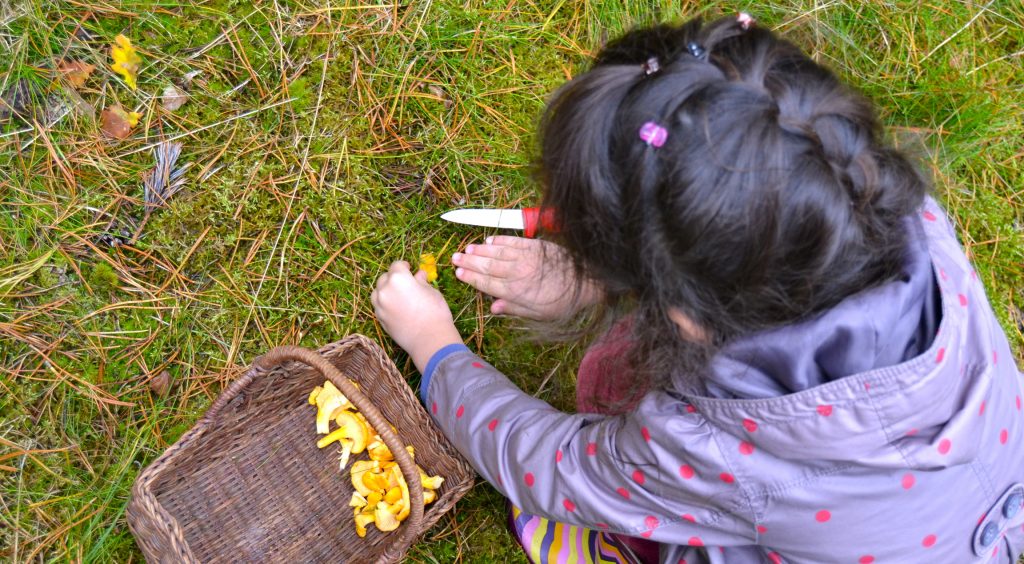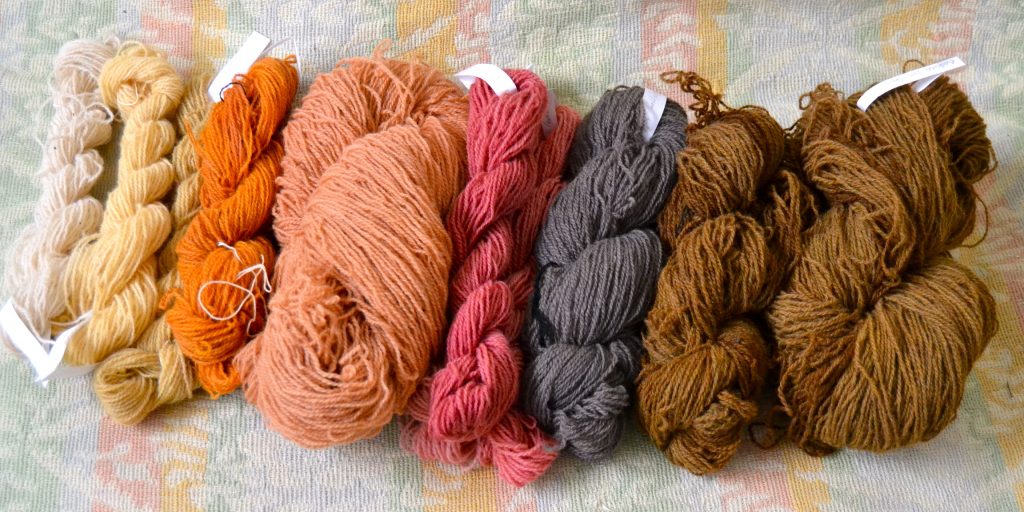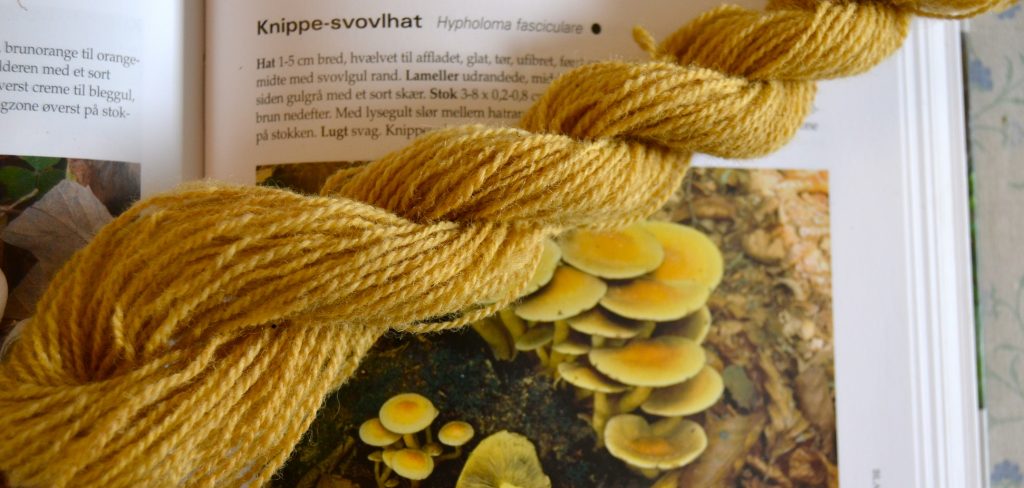
2015 is history, and it’s now 2016, but I think there’s just time to show you my mushroom dyeing of 2015, which brought a quite nice mushroom harvest.
Fall is my favorite time of year. Always has been. It’s the colors, the scents, and the long forest walks. We go to the same plantation in the northern part of Denmark every year, and this year was no exception. Part of the area has recently been turned into a test center for wind mills, but luckily, the windmills didn’t disturb the mushrooms! And they actually please the eye, the windmills, as they peek over the trees – especially when you consider their part in ensuring that Denmark will actually live up to its climate goal of 40% CO2 reduction in 2020.

My family already picked mushrooms before I was born, but always for eating, and always from a small, safe repertoire of about 5 species, with the main emphasis on the chanterelle, because it is very tasty and very easy to recognize.
We still hunt for edible mushrooms, and we are even training the next generation. See what an expert chanterelle hunter my 5-year old is:

But these days I also hunt mushrooms for dyeing, and that makes it even more fun to walk in the forest – I always find something interesting! This is the yarn I’ve dyed with mushrooms this fall:

I’m really happy with this lot, and I’m thinking about a project where I could use all these colors together.
From right to left, they are dyed with common eartball (brown skeins, 900 g of mushrooms on 150 g of yarn), velvet pax (green-grey), Cortinarius semisanguineus (rose), some mixed Cortinarius ssp (tan).
I don’t know which mushroom the orange skein is dyed with. I didn’t take pictures of it, but I think it was a species of Cortinarius. Here’s the orange skein seen on a page of my big mushroom book with some species that it could possibly be, most of which are really poisonous. It’s hard to tell different types of Cortinarius apart, and some of them very poisonous, so always keep them apart from food mushrooms!

The light yellow skeins were dyed with common rustgill (Gymnopilus penetrans). It’s a very common mushroom, and after walking through an entire forest of them, I finally picked some. After trying it in the dyepot, I don’t think it’s a spectacular dye mushroom. There’s a number of ways to achieve this yellow color, and it’s not very abundant in this mushroom.

I also found a lot of sulphur tuft (Hypholoma fasciculare) which I find to be a mediocre dye mushroom, since it gives just another yellow, and not even a lot of it.

The last skein is best described as “off white”. I tried to dye it with amethyst deceiver although I sort of knew it wouldn’t work.

They look so pretty on the forest floor, but unfortunately, you’re best off just leaving them there. The purple color is indeed deceitful. It vanishes when you store the mushrooms for a couple of days, it even vanishes if it rains on them while they are still growing. This last fact tells you to give up right away. Predictably, even a large amount of mushrooms give no color on yarn, but I guess sometimes the true experimentalist has to verify the obvious.
[…] couple of years ago, I dyed a lot of yarn with earthballs. The color turned out a nice yellowish brown, but the yarn was simply full of spores that continued […]
[…] are not blue. This could be the case with other pretty colors that are impossible to extract? The amethyst deceiver failure comes to […]
[…] (bought) indigo. In the hat on the lower right, woad is accompanied by orange wool, dyed with orange mushrooms of the Cortinarius […]